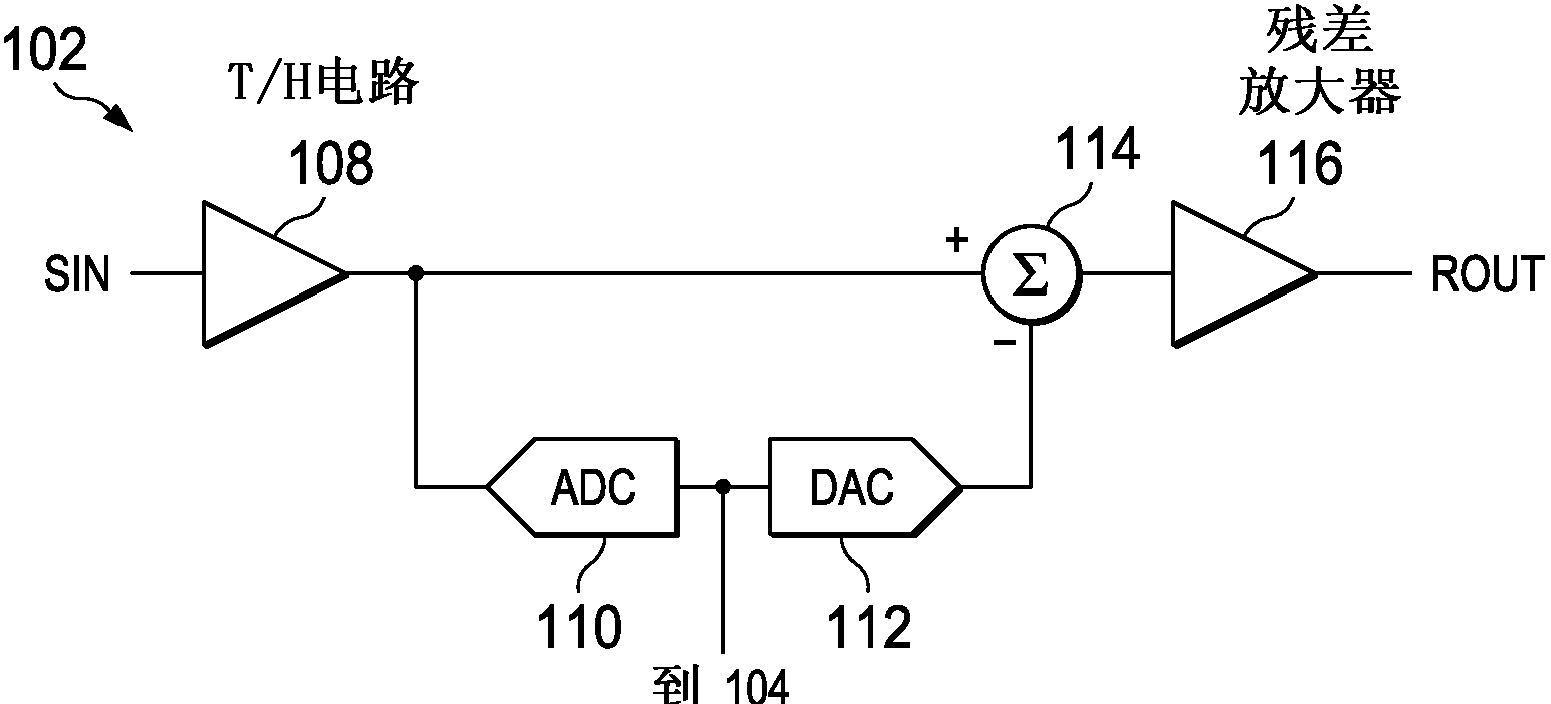Power and area efficient interleaved ADC
A multiplexer, hold circuit technology, applied in the direction of analog/digital conversion, code conversion, electrical components, etc., can solve problems such as doubling power consumption and increasing noise
- Summary
- Abstract
- Description
- Claims
- Application Information
AI Technical Summary
Problems solved by technology
Method used
Image
Examples
Embodiment Construction
[0027] exist Figure 3A In , an ADC 300 according to an exemplary embodiment of the present invention is presented. ADC 300 has substantially the same functionality as ADC 100 . However, there is a difference in the pipeline; that is, stages 102-1 to 102-N are replaced by stages 302-1 to 302-N and clock circuit 303.
[0028] refer to Figure 3B and Figure 3C, stages 302-1 to 302-N (hereinafter 302) can be seen in more detail. In operation, T / H circuits 304 and 306 are coupled to receive an analog input signal (analog input signal AIN or a residual signal from a previous stage). Since these T / H circuits 304 and 306 are arranged in parallel with each other, the timing of the T / H circuits 304 and 306 can be designed such that sampling occurs on substantially non-overlapping logic stages or phases of the clock signal. Preferably, the clock circuit 303 generally includes a clock divider (ie, a clock divider with a frequency divided by 2) to generate a clock signal CLK / 2 with a...
PUM
 Login to View More
Login to View More Abstract
Description
Claims
Application Information
 Login to View More
Login to View More - R&D Engineer
- R&D Manager
- IP Professional
- Industry Leading Data Capabilities
- Powerful AI technology
- Patent DNA Extraction
Browse by: Latest US Patents, China's latest patents, Technical Efficacy Thesaurus, Application Domain, Technology Topic, Popular Technical Reports.
© 2024 PatSnap. All rights reserved.Legal|Privacy policy|Modern Slavery Act Transparency Statement|Sitemap|About US| Contact US: help@patsnap.com










